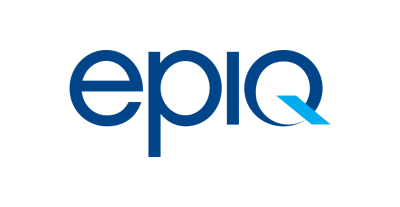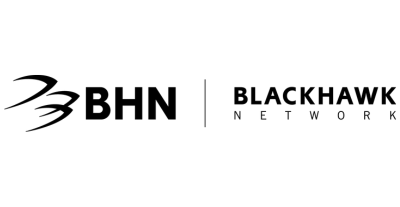Knowledge Hub
Join the Conversation!
Impartial and independent, ThoughtLeaders4 Competition Knowledge Hub hosts cutting edge industry content and insight.
Email maddi@thoughtleaders4.com to submit content.
Time to reap the benefits? The UK’s new subsidy control regime comes into effect
Date: 26/01/2023 Type: Articles Topic: Competition | Law | Litigation |
On 4 January 2023, the UK's Subsidy Control Act 2022 ("SCA") came fully into effect. Plans for a new subsidy control regime were first announced in September 2020 as part of the UK's commitment to the EU-UK Trade and Cooperation Agreement ("TCA"). The EU State aid rules were seen as too restrictive and a new subsidy regime was considered necessary to bring about significant benefits to protect certain industry sectors and geographic areas of the UK, and not least to help the UK Government pursue its so-called 'Levelling Up' agenda. Since the SCA received Royal Assent in April 2022, we have had something of an interim period where the provisions on subsidy control set out in the TCA agreed between the EU and UK largely continued to apply (bar a few exceptions). Now, however, the provisions of the SCA have come into force in their entirety.
This article will provide an overview of the new SCA and the subsidy control regime it has introduced in the UK, explore the key takeaways and consider the extent to which this new regime differs from the previous EU State aid rules.
Overview of the SCA
The SCA's overriding aim is to place more power into the hands of UK public authorities to make targeted, effective subsidy awards that address UK market failures and have clear equity objectives (i.e., they assist in redistributing the benefits of economic activity between different social groups and/or geographical areas in the UK).
The chief way this aim is to be realised is by creating a subsidy regime which removes the need for public authorities to gain pre-approval for the individual subsidies or subsidy schemes they intend to make or introduce.[1] Rather, public authorities will largely rely on a process of self-assessment against a set of principles and self-reporting, giving far greater discretion to those authorities which make the subsidy awards. However, this discretion is not entirely unfettered and will be subject to some checks and balances.
For certain subsidies considered high risk cases (in particular, large subsidies), public authorities will be required on a mandatory basis to seek advice from the newly created Subsidy Advice Unit ("SAU") which sits within the Competition and Markets Authority ("CMA"). The SAU will prepare advisory (non-binding) reports to public authorities in relation to the compatibility of the subsidies or subsidy schemes that are referred to it by evaluating the same against a set of principles. For certain other subsidies, public authorities may choose to obtain non-binding advice regarding the SAU's view of the authority's own self-assessment (i.e., make a voluntary referral). The SAU will also be responsible for monitoring and reporting on the effectiveness of the new SCA regime.
The UK Government will also have a call-in power to require public authorities to seek advice from the SAU and a power to refer subsidies to the SAU for a compliance review after they have been granted. Any advice provided by the SAU on such subsidies will, again, be non-binding.
Public authorities will now be required to enter details of subsidies granted on the UK's subsidy database and enforcement of the UK subsidy control rules will largely be a matter for the courts. Indeed, interested parties may challenge the granting of a subsidy before the Competition Appeal Tribunal ("CAT") within three months of publication of the public authority's entry on the subsidy database.
Is it a subsidy?
The starting point for any assessment under the SCA is whether the award in question constitutes a subsidy and thus falls within the SCA's remit.
In simplest terms, a subsidy is where a UK public authority provides financial assistance to an enterprise[2] on better terms, or to such a level, than would have been available on the normal market. Under the SCA, a subsidy is defined as any form of financial assistance which satisfies a four-part test, namely where the financial assistance:
- Is given (directly or indirectly) by a public authority;
- Confers an economic advantage on the enterprise;
- Is specific (i.e., it benefits one or more enterprises over others with respect to the production of goods or services in the same market); and
- Has, or is capable of having, an effect on competition or investment within the UK or on trade or investment between the UK and another country or territory (or both) outside the UK.
It must be remembered that financial assistance itself can take many forms. For instance, this could be a direct transfer of funds (e.g., a grant, loan or an equity investment), a contingent transfer of funds (e.g., a loan or rent guarantee) or the foregoing of revenue that is otherwise due.
Only a form of financial assistance that falls within the above definition will be considered a subsidy for the purposes of the SCA. Although there are slight differences in the UK and EU law definition of a subsidy, the UK definition is broadly aligned with EU law.
Is the subsidy consistent with the Principles?
Any authority intending to award a subsidy (or create a subsidy scheme)[3] must ensure that it complies with the principles set out in the SCA ("Principles"). The seven Principles are set out in full in the box below.
|
Principle A (common interest): Subsidies should pursue a specific policy objective in order to remedy an identified market failure or address an equity rationale (such as a local or regional disadvantage, social difficulties or distributional concerns). Principle B (proportionality): Subsidies should be proportionate to their specific policy objective and limited to what is necessary to achieve it. Principle C (designed to change economic behaviour): Subsidies should be designed to bring about a change of economic behaviour of the beneficiary. That change, in relation to a subsidy, should be conducive to achieving its specific policy objective and something that would not happen without the subsidy. Principle D (costs that would be funded any event): Subsidies should not normally compensate for the costs the beneficiary would have funded in the absence of any subsidy. Principle E (less distortive means of achieving objective): Subsidies should be an appropriate policy instrument for achieving their specific policy objective and that objective cannot be achieved through other, less distortive, means. Principle F (competition and investment in the UK): Subsidies should be designed to achieve their specific policy objective while minimising any negative effects on competition and investment within the UK. Principle G (beneficial effects outweigh negative effects): Subsidies’ beneficial effects (in terms of achieving their specific policy objective) should outweigh any negative effects, including, in particular, negative effects on competition and investment within the UK, or international trade or investment. |
Public authorities need to consider, and apply, the above Principles to any particular subsidy or subsidy scheme in a balanced assessment. Official guidance on the SCA ("Guidance")[4] sets out in detail how this process should be carried out. In essence, this involves ensuring that a subsidy (or subsidy scheme) is consistent with all seven Principles and that the benefits outweigh any potentially negative effects.
It should be noted that any subsidies which affect energy and the environment must be assessed against a set of additional principles ("E&E Principles"),[5] in addition to an assessment against the Principles.
Prohibited subsidies
In recognition of the fact that some subsidies pose a greater distortive risk to competition and investment, some forms of subsidies are prohibited outright. The types of prohibited subsidy include: (i) unlimited guarantees; (ii) subsidies that are contingent on export performance;[6] (iii) subsidies that are conditioned on the use of local goods or services;[7] (iv) subsidies that require the recipient enterprise to relocate its activities within the UK (unless this relocation is designed to reduce economic or social disadvantages); (v) those given to ailing or insolvent enterprises (unless certain exceptions apply); (vi) subsidies to enterprises providing export credit insurance (again, where certain limited exceptions apply) and (vii) subsidies for air carriers for the operation of routes.
Exempt subsidies
There are other types of subsidies that are exempt from the subsidy control requirements. These include subsidies to compensate for damage caused by natural disasters and other exceptional circumstances, subsidies given for the purpose of safeguarding national security and certain tax measures.
Exemptions from referral
Referral to the SAU is not required in relation to: (i) exempt subsidies (see above); (ii) subsidies given under a scheme; (iii) assistance below certain de minimis thresholds (see below); (iv) assistance given to an enterprise that is providing services of public economic interest (see below); and (v) streamlined subsidies (see below).
Services of Public Economic Interest ("SPEI")
SPEIs are essential services provided to the public. SPEIs may include postal services, social housing and certain transport networks. In order to be designated as a SPEI, a public authority must be satisfied that the service is provided for the benefit of the public and would not be provided (or would not be provided on the terms required) by an enterprise under normal market conditions.
If a public authority wishes to grant a subsidy to a SPEI, there are still further procedural elements to consider in addition to a balanced assessment of the Principles. Namely, any subsidy provided to a SPEI must:
- Be limited to what is necessary to deliver the SPEI (i.e., it must not overcompensate the enterprise);
- Be provided in a transparent manner via a written contract or other enforceable arrangement;
- Be regularly reviewed to ensure the subsidy remains limited to that needed to deliver the SPEI; and
- Be recorded in the subsidy control database.
Minimal Financial Assistance ("MFA") and SPEI Assistance ("SPEIA")
MFA represents an exemption to the usual subsidy control rules under the SCA. If a public authority grants a subsidy below £315,000 over the applicable period[8] to a particular enterprise, this exempts a public authority from the need to assess the subsidy against the Principles or E&E Principles. As such, subsidies constituting MFA can be granted much more quickly.
In considering whether an enterprise has received any other subsidies in the applicable period (i.e., such that any further awards could exceed the £315,000 threshold) public authorities should consider, not just awards under the SCA, but also any de minimis awards under the previous EU State aid rules given before 31 December 2020 (or, indeed, after this date insofar as an award may come within the scope of the Northern Ireland Protocol (see below)) and any subsidies awarded under the UK-EU TCA before 4 January 2023.
Before awarding an MFA subsidy, the public authority must provide a written statement to the receiving enterprise and receive from the latter in turn a written confirmation that, by receiving the subsidy, the £315,000 threshold will not be exceeded.
Furthermore, certain "low value" SPEI subsidies ("SPEIA") are similarly exempt from the usual rules under the SCA. The SPEIA threshold is higher than for MFA, where SPEI subsidies under £725,000 awarded to a particular enterprise over the applicable period will be classified as SPEIA.
Streamlined Routes
As explained, public authorities will need to self-assess compliance of a proposed subsidy against the seven Principles. However, the UK Government has also published so-called Streamlined Routes whereby, provided the public authority self-assesses that a proposed subsidy meets the criteria for a particular streamlined route, it will not need to self-assess the compliance of the subsidy against the Principles. The intention behind the Streamlined Routes is to allow subsidies to be granted in areas of high priority from a socio-economic standpoint. The UK Government has published three final Streamlined Routes – on R&D and innovation,[9] energy usage[10] and local growth[11] – which were laid before Parliament on 9 January 2023[12]. It is likely that more Streamlined Routes will be introduced in the future. Importantly, whilst public authorities can avail themselves of Streamlined Routes, they can only be introduced by the UK Government.
SSoI and SSoPI
The SCA recognises two forms of subsidy that are at greater risk of leading to distortive effects on competition and investment within the UK: Subsidies or Schemes of Interest ("SSoI") and Subsidies or Schemes of Particular Interest ("SSoPI").
SSoI and SSoPI are defined in relation to monetary thresholds and whether the subsidy or scheme in question is granted to enterprises which are active in sensitive sectors of the UK economy. In particular:
- An SSoPI is any: (i) subsidy exceeding £10 million in value; (ii) restructuring subsidy (regardless of value); or (iii) subsidy valued between £5 to £10 million relating to one of the eight sensitive sectors.[13]
- An SSoI is any: (i) subsidy valued between £5 to £10 million that does not relate to sensitive sectors; or (ii) rescue subsidy (regardless of value).
Public authorities will be encouraged to undertake a greater level of analysis to ensure compliance with the Principles. A high-level diagrammatic illustration as to how to determine whether a subsidy is an SSoI or SSoPI is set out below.
SSoPI are particularly important given that, if any authority intends to grant a subsidy that qualifies as such, it will require a mandatory referral to the SAU. This is one of the most significant changes brought in by the new regime. SSoI meanwhile, whilst they can be introduced without the prior need for mandatory referral, may nonetheless be referred voluntarily to the SAU for review
Role of the SAU
As regards the role of the SAU, the SAU has been established as a specific body within the CMA, which has itself been empowered under Part 4 of the SCA to deal with subsidy referrals and will generally be responsible for enforcing the new subsidy control regime within the UK.
The SAU has the following core powers of review and enforcement vis-à-vis the subsidy control regime under the SCA:
- Mandatory referrals of SSoPI
As noted above, any public authorities seeking to award a subsidy that constitutes a SSoPI must refer the same to the SAU for review before the SSoPI is implemented. Once a SSoPI referral request is submitted to the SAU, the latter has five working days to confirm it contains the required information.[14] Following acceptance of a referral, the SAU has a period of 30 working days[15] to produce a report on the proposed SSoPI. Such report will contain an evaluation as to the public authority's own assessment of the subsidy's compliance with the Principles. If the SAU identifies any shortcomings or potential issues, the report may include advice as to how the public authority's self-assessment might be improved or how the subsidy could be modified to ensure that it will be compliant with the Principles and other requirements of the SCA. The SAU's report will be made public and the referring public authority must not give the subsidy in question until a further five working days has elapsed from the SAU's issuance of its report ("Cooling Off Period").
Preparing a mandatory referral will likely be a burdensome process for all parties involved – a detailed substantive assessment of the effects on competition and the provision of sufficient evidence and reasoning will be necessary to demonstrate compliance with the seven Principles to the SAU. Early engagement with the SAU will be prudent.
- Voluntary referrals
Public authorities may voluntarily refer SSoI to the SAU. Unlike mandatory referrals of SSoPI, the SAU will have discretion as to whether to prepare a report on any voluntarily notified SSoI. In official guidance published by the SAU,[16] the SAU has noted that it will follow a list of prioritisation principles in determining whether to accept a voluntary SSoI referral, which will consider the SSoI's impact, significance and whether the nature of the SSoI justifies the use of the SAU's resources in preparing a report on it.
- Call-ins
The relevant Secretary of State ("SoS") has the power to "call-in" a particular subsidy for review if they consider that the same has not been duly assessed vis-à-vis the Principles and other requirements of the SCA and/or if the subsidy in question might adversely affect competition or investment in the UK. The effect of any call-in from the SoS will be for the relevant public authority to make a mandatory referral of the subsidy to the SAU which, in turn, must prepare a report. If the subsidy in question has already been voluntarily referred to the SAU, the referral will be treated as a mandatory one from the time the call-in is issued.
- Post-award referral
The SoS may also refer a subsidy or scheme to the SAU after it has been given or introduced. The reasons for doing so are the same as for any issuance of a call-in. Where the SoS makes any post-award referral, the public authority must make a referral to the SAU by the end of 20 working days after the subsidy or scheme has been entered on the subsidy database (see below).
Note that the SAU will not decide whether a subsidy can be given or directly assess whether it complies with the subsidy control rules. Rather, the SAU will assist public authorities by providing an independent, non-binding report (published on the UK Government's website) evaluating the authority's assessment of compliance against the Principles and (where applicable) the E&E Principles.
Furthermore, the SAU will play an important monitoring role in the SCA regime. Inter alia, the SAU will publish an annual report detailing the subsidies and schemes that have been referred to it during the most recent financial year. More broadly, at specified intervals[17] the SAU must carry out an in-depth review into the effectiveness of the SCA regime and its impact on competition and investment within the UK. Each such review must be accompanied by a report which will then be presented to the UK Parliament. The first of these reports will cover the period from 4 January 2023 to 31 March 2026.
To assist with this monitoring role, the SAU will have broad information-gathering powers. The SAU will have the power to require the provision of information or documents and may impose penalties if any person fails to comply with such a direction.
Transparency and reporting requirements
This is perhaps one of the most important functions of the SCA and one that is intended to mitigate against the requirement for mandatory approval (as existed previously under the EU State aid rules).
Public authorities which introduce any subsidy schemes and award any individual subsidies over £100,000 must upload details of the same onto the online UK subsidy database. In particular, any such subsidy (other than a subsidy in the form of a tax measure) or subsidy scheme (of any type) must be disclosed within three months of confirmation of the decision to give the subsidy or make the subsidy scheme. Subsidies in the form of tax measures must be disclosed within one year of the date of the tax declaration. This database will be maintained by the Department for Business, Energy & Industrial Strategy ("BEIS").[18] All records of public schemes and subsidy awards, once uploaded to the database, can be freely accessed by the public.[19]
The need for public authorities to maintain a database of scheme and subsidy records is particularly important to help the SAU monitor the effectiveness of the SCA regime and, saliently, to allow any interested parties to challenge any particular schemes or subsidies.[20]
Challenges to subsidies – role of the Competition Appeal Tribunal
The CAT has been empowered with the jurisdiction to review any subsidy control decisions under the SCA.
An interested party[21] may apply to the CAT for a review of a particular subsidy decision if they feel the decision has had a negative effect on trade or investment in the UK and was made in contravention of the Principles or based on some other error of procedure. The CAT's review of such decisions will be based on judicial review standards and on public law grounds. The CAT may also consider whether a subsidy or scheme was, in fact, subject to the Northern Ireland Protocol and the EU State aid rules (see below).
Importantly, the CAT's substantive assessment of subsidies or schemes under the SCA will not focus on whether the decision was correct, but whether it was lawful. In other words, the CAT will not evaluate the merits of any scheme or subsidy per se, but whether, for instance, the public authority acted ultra vires in granting it and whether the decision was fair and reasonable. (Though, as the CAT will need to ascertain how the public authority assessed the scheme or subsidy against the Principles, there is likely to be a de facto substantive evaluation of the decision to a degree).
A challenge can be brought within one month of the date the subsidy information was uploaded to the online database, which is a shorter timeframe than the standard judicial review limitation period of three months.
The CAT may have recourse to a number of statutory reliefs following a review of a subsidy decision, including the issuance of a mandatory order, a prohibiting order, a quashing order or an injunction. The CAT also has the power to grant recovery orders if it finds that a subsidy or subsidy scheme has been awarded in contravention of the SCA. The recovery order will require a public authority to recover the amount of that subsidy from the beneficiary.
Interaction with the Northern Ireland Protocol
With all the SCA's new focus on the empowerment of public authorities in the UK to award subsidies more expeditiously and effectively, the elephant in the room remains the position of Article 10 of the Northern Ireland Protocol ("NI Protocol"). This provides that, in order to avoid any creation of a hard border between Northern Ireland and the Republic of Ireland, EU State aid rules will continue to apply to any subsidies which could affect the trade in goods and electricity between Northern Ireland and the EU (i.e., including the Republic of Ireland).
In theory, the line between the SCA and the NI Protocol is easy enough to discern. Any entities based in Northern Ireland or rest of the UK which trade cross-border in goods or electricity with the Republic of Ireland (or wider EU) will be outside the scope of the SCA. There is also a degree of certainty in that services and (to some extent) agricultural and fishery subsidies are removed from the scope of Article 10 of the NI Protocol. However, in practice this line is likely to be much harder to distinguish. Going forwards, now that the SCA is fully in operation, it will be interesting to see just how smoothly the SCA and Article 10 of the NI Protocol can co-exist. The UK Government has published guidance on the UK's international subsidy control commitments (including the NI Protocol) which undoubtedly provides more clarity to public authorities and businesses within the UK. Whether this will provide enough certainty and clarity going forwards remains to be seen.
Differences with the EU State aid rules
There are a number of significant ways in which the SCA differs from the EU's State aid rules:
- There is no need for mandatory pre-approval of subsidies or schemes. Whilst SSoPI need to be mandatorily referred to the SAU, the latter's report and advice is non-binding. This is a stark contrast to the position in the EU where the European Commission must pre-approve any measures which could amount to State aid and which are not block exempted or fall under the de minimis exception.
- It follows from the removal of mandatory pre-approval that public authorities in the UK will be able to award subsidies more quickly and efficiently under the SCA than they could do previously under the EU State aid rules. Whereas approval from the European Commission can take months, public authorities face a far shorter timeframe to introduce schemes and award subsidies. Once a scheme has been registered on the subsidy database, individual subsidies can be awarded swiftly. Even SSoPI, which require mandatory referral to the SAU, can be implemented following a cumulative period of 40 working days in total (once the SAU has accepted and reviewed the referral and the Cooling Off Period has expired).
- Moreover, public authorities in the UK will, under the SCA, be far more empowered to award subsidies based largely on a process of self-assessment against the Principles and other elements of the regime. This self-assessment process will be tempered and mitigated by the role of the SAU, the need to publish details of schemes or subsidies on the public database and the ability for interested parties to bring challenges of subsidy decisions to the CAT. Thus, public authorities will enjoy a greater degree of autonomy under the SCA, though not an unfettered one.
The above notwithstanding, the substantive subsidy rules under the UK regime remain similar in scope and intent to the EU State aid rules. It is likely that measures that would be acceptable under the EU State aid rules are unlikely to be regarded as problematic under the UK rules. Therefore, the EU rules will inevitably continue to be a relevant point of reference for the time being when analysing subsidy awards under the UK regime.
Comment
The introduction of the SCA represents the culmination of one of the principal driving aims behind the UK's withdrawal from the EU; that of establishing a bespoke system of state subsidies that is removed from the encumbrance of prior regulatory approval and which can be used to further the UK's core economic and social aims. Targeted subsidies will, the UK Government hopes, be used to redistribute economic growth in the UK more evenly, reach net zero emission targets and boost investment-reliant sectors like research and development.
Certainly, public authorities will enjoy much more license to design and introduce subsidies or schemes post the SCA's introduction. Time will tell whether the safeguards built into the SCA – the need for self-assessment against the Principles, the requirement for transparency, the CAT's review of contested subsidy decisions etc., – will be sufficient to ensure that public authorities only introduce schemes and subsidies which have a positive outcome and which help achieve the broader aims of the UK Government. One must hope that the situation in which public authorities award subsidies which have a distortive impact on competition or investment in the UK can be avoided.
In any event, it is clear that it will be crucial to consider whether any award of a subsidy is compliant with the seven Principles early on and, if a mandatory referral is necessary, public authorities should engage with the SAU swiftly and provide sufficient evidence of compliance with the Principles to ensure that any referral is not rejected as incomplete upon submission to the SAU. This will be particularly important for larger or more complex subsidies.
[1] This is a move away from the position under the EU State aid rules whereby measures have to be notified to and approved in advance by the European Commission (subject to exemptions, such as for measures covered by block exemption regulations).
[2] Under the SCA, an enterprise is, in effect, any entity (e.g., any natural or legal person, or group of the same) that is engaged in an economic activity (i.e., offering goods and/or services on a market).
[3] A subsidy scheme is a set of rules that describes the eligibility, terms and conditions for any number of possible subsidies to be given in the future. Essentially, it provides a framework for the future award of pre-determined individual subsidies.
[4] See: https://www.gov.uk/government/publications/uk-subsidy-control-statutory-guidance
[5] The E&E Principles are set out in Schedule 2 of the SCA.
[6] Any subsidy that relates to the export performance of goods or services (for instance, covering the price difference between UK market prices and international market prices) is prohibited under the SCA.
[7] Any subsidies that are premised on the requirement to use locally-sourced goods or services in the UK. Such requirements do not need to be strictly related to the nature of the subsidy itself. For instance, any subsidies which require (i) the use of domestic goods or tools in a manufacturing process or (ii) the use of domestic components to be incorporated into a separate product, will constitute a prohibited subsidy.
[8] For MFA, the applicable period represents the elapsed part of the current financial year (i.e., from 1 April to 31 March) and the two financial years immediately preceding the current financial year.
[9] This allows subsidies for feasibility studies, industrial research and experimental development projects and SME research, development and innovation support. See: Research, Development and Innovation Streamlined Subsidy Scheme (publishing.service.gov.uk)
[10] This allows subsidies for energy demand reduction projects, green heat network projects and related green skills training. See: Energy usage: draft Streamlined Route (publishing.service.gov.uk)
[11] This allows subsidies for SMEs for business development projects, subsidies to support the employment of workers with disabilities and disadvantaged workers. See: Local Growth Draft Streamlined Subsidy Scheme (publishing.service.gov.uk)
[12] The UK Government has also published accompanying guidance for each route (https://www.gov.uk/government/publications/subsidy-control-act-2022-streamlined-routes) which are designed to assist public authorities with their navigation of each route.
[13] The sensitive sectors are organised by reference to standard industrial classification ("SIC") codes. The sensitive sectors are: (i) Manufacture of basic iron and steel and of ferro-alloys; (ii) Aluminium production; (iii) Copper production; (iv) Manufacture of motor vehicles; (v) Building of ships and floating structures; (vi) Manufacture of motorcycles; (vii) Manufacture of air and spacecraft and related machinery; and (viii) Production of electricity.
[14] Note that mandatory referral requests must contain, at a minimum, the following information: (i) an explanation of why the public authority considers that the subsidy or subsidy scheme would meet the definition of an SSoPI; (ii) a summary of the assessment the public authority carried out of the SSoPI (e.g., its compliance with the Principles); (iii) any evidence relevant to making that assessment; and (iv) all of the information that the public authority would be required to upload to the subsidy database.
[15] This can be extended in certain circumstances.
[16] See: https://www.gov.uk/government/publications/guidance-on-the-operation-of-the-subsidy-control-functions-of-the-subsidy-advice-unit/operation-of-the-subsidy-control-functions-of-the-subsidy-advice-unit#prioritisation-principles
[17] The specified review periods cover the following: (i) the period between 4 January 2023 and 31 March on the third year following the year of commencement; (ii) the following period of three years; and (iii) each subsequent period of five years (although the SoS may direct the SAU to prepare a report covering an alternatively specified period if they so wish).
[18] Public authorities can upload details of schemes or subsidies here: https://manageuksubsidies.beis.gov.uk/
[19] The public an access these records here: https://searchforuksubsidies.beis.gov.uk/
[20] The UK Government published the Subsidy Control (Subsidy Database Information Requirements) Regulations 2022 which specify the details that public authorities must include in their entries on the UK's subsidy database.
[21] Per Section 7(a) and 7(b) of the SCA, an interested party includes a person whose interests are affected by the giving of the subsidy or making of the subsidy scheme. The SoS can also constitute an interested party.
Author
Marta Isabel Garcia, Will Spens and Amarveer Randhawa - Stephenson Harwood
Our Competition Corporate Partners



















